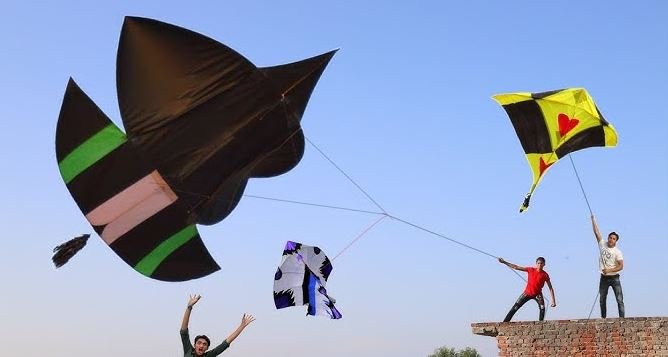In an era increasingly defined by the glow of mobile screens and the endless scroll of social media feeds, traditions that once formed the beating heart of community life often struggle for relevance. Among these is kite flying, a practice that has drifted to the margins in many parts of the country but still holds a unique place in the cultural, social, and symbolic fabric of India’s festivals. Far from being a mere pastime, kite flying carries with it layers of meaning, heritage, and shared experience that speak to the deeper currents of identity and belonging in contemporary Indian society.
Kite flying is, at its core, an act of participation. It requires more than a passive presence; it draws people out of their homes, into open spaces, and into the company of others. In cities and towns where life is increasingly lived in isolation, it creates a stage for interaction between generations, between neighbours, and between friends. The making, buying, and flying of kites invite stories, skills, and memories to be shared, passing on not just techniques but a sense of continuity. It is here, in the act of coming together around a shared tradition, that the cultural dimension of kite flying reveals itself as a living thread linking the past to the present. The social significance of kite flying during festivals such as Makar Sankranti, Basant Panchami, and even Raksha Bandhan lies in its ability to dissolve boundaries, if only for a day. Rooftops and open grounds become communal spaces where competition is good-natured, laughter is abundant, and differences recede into the background. The sight of vibrant kites cutting across the blue sky is not just a visual delight but a symbol of collective joy, a reminder that celebration is as much about the people we share it with as it is about the occasion itself. In a time when urban life often fosters anonymity, such traditions help nurture a sense of community and belonging that modern living rarely offers. Symbolically, kite flying is rich with metaphors that resonate far beyond the act itself. A kite soaring high can be a symbol of aspiration, freedom, and resilience, while the tug of the string reminds us that even in flight, we remain connected to our roots. The cut-and-thrust of friendly competition mirrors the challenges of life, where skill, patience, and adaptability determine how long we stay aloft. These layers of meaning imbue kite flying with a relevance that transcends mere recreation, making it an enduring emblem of celebration and spirit. Yet, the persistence of this tradition cannot be taken for granted. The growing dominance of digital entertainment, the reduction of open spaces in urban areas, and the creeping commodification of festivals have all contributed to a decline in active participation. For younger generations, the excitement of a kite tugging at the end of a spool is increasingly being replaced by the instant gratification of a smartphone notification. If this trend continues unchecked, we risk losing not only a recreational activity but an important vessel for transmitting cultural values and social connections. Reviving and sustaining kite flying in the contemporary context will require more than nostalgia; it will need conscious effort from families, communities, and institutions. Schools and local cultural bodies could incorporate kite-making and flying into festival calendars, turning them into platforms for creative expression and historical storytelling. Municipalities could designate and maintain safe open spaces for such activities, ensuring that urban development does not erase the very environments where traditions flourish. Media campaigns and community-led events could highlight the joys and benefits of participatory traditions, presenting them not as relics of the past but as relevant, vibrant practices for today’s India.
Festivals have always been about more than rituals; they are about connection—connection to our heritage, to each other, and to the values that shape our shared life. Kite flying embodies all of these in a form that is accessible, joyous, and deeply symbolic. Preserving it is not merely about holding onto the past but about ensuring that the future has room for traditions that bring people together in celebration, skill, and shared meaning. In protecting and promoting kite flying, we are not just saving a pastime; we are safeguarding a living heritage that reminds us that our roots are as important as our wings.




